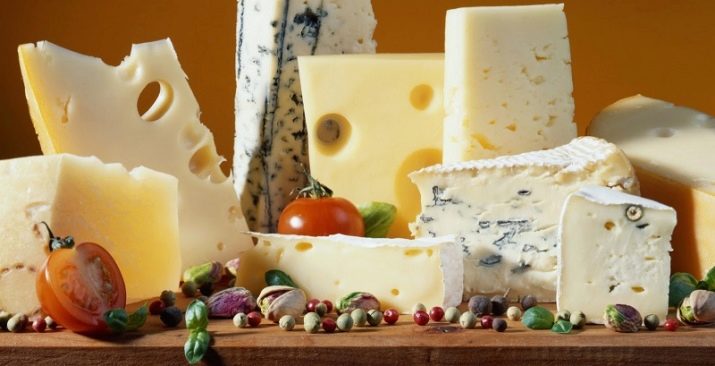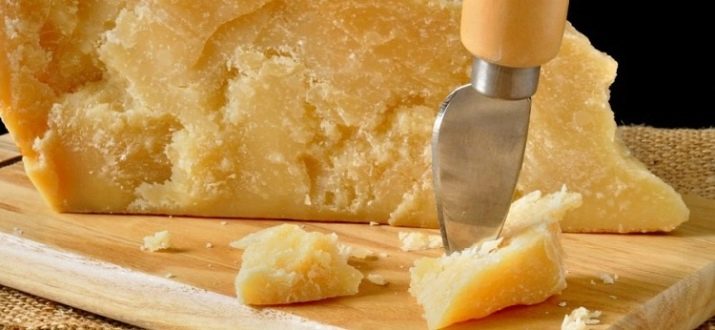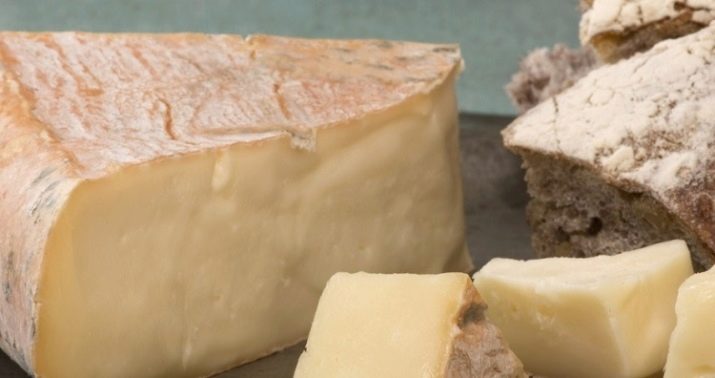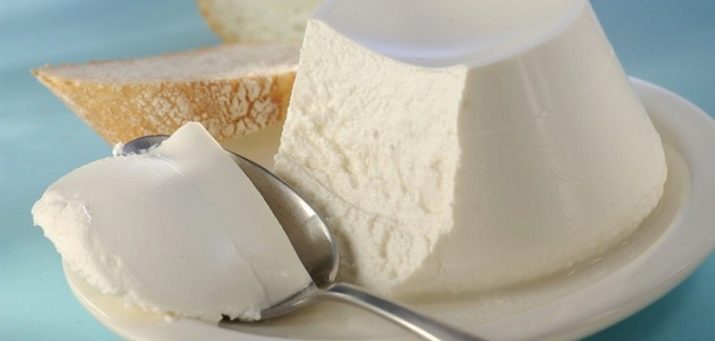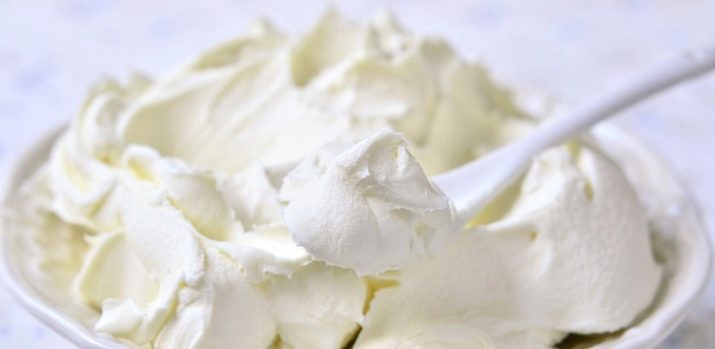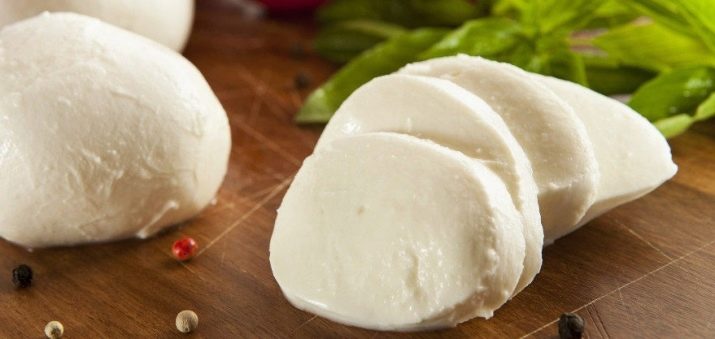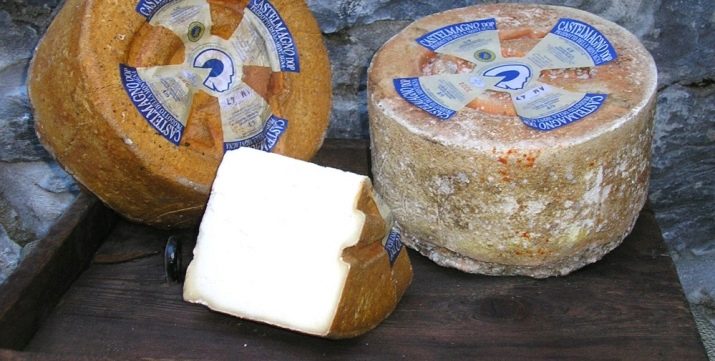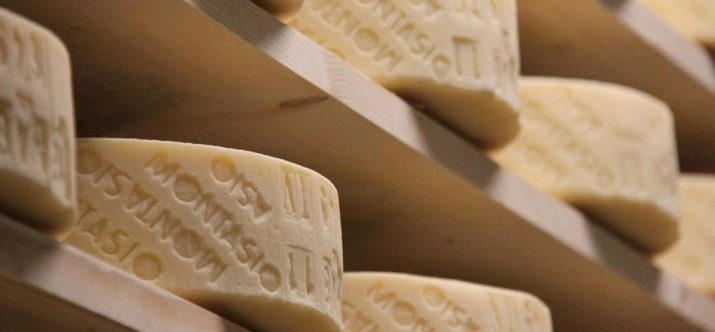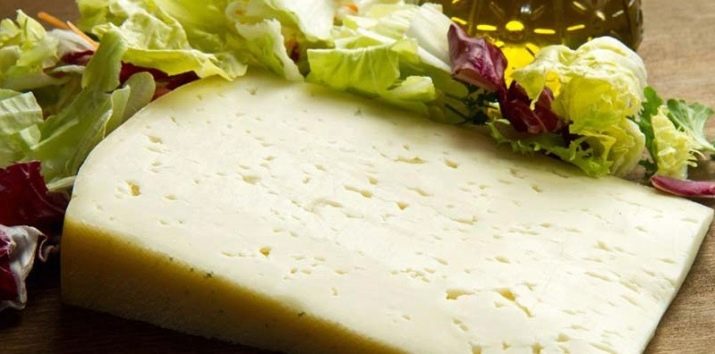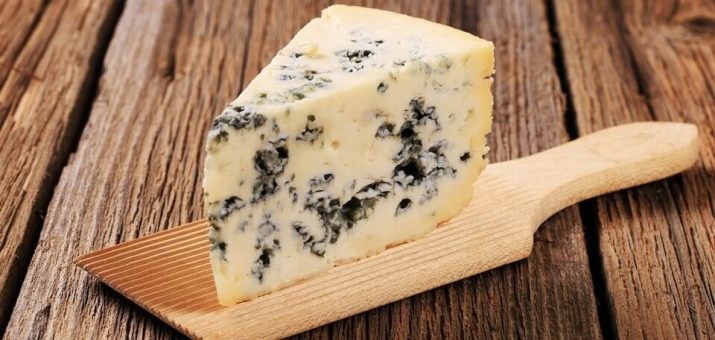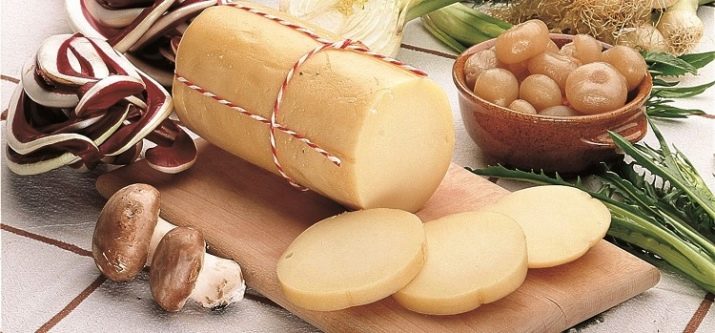Italian cheese: types and recipes of cooking

The names of Italian cheeses remind many pleasantly melody: Taleggio, Romano, Ricotta, Gorgonzolla, Mascarpone ... Today it is impossible to imagine cooking any cuisine of the world without using cheeses from Italy. Pizza, sauces, casseroles and many meat dishes include various types of cheeses. All variations of this product can be divided into the following groups:
- solid
- semi-hard;
- semi-mild;
- blue (with mold);
- serum;
- mature
All varieties of Italian cheeses can not be described, because there are about 600. However, you can consider the main and most popular varieties.
Hard Cheeses
Parmesan
Classics of the genre of Italian cuisine - the world famous Parmesan. In Italy, the birthplace of this indispensable product, it is called Parmigiano Reggiano. This is one of the solid varieties of cheese with an unforgettable rich taste, where you can feel the sweet fruity aroma.
To this day, Parmesan is brewed according to the recipe of 13th century Benedictine monks. Milk for Italians' favorite cheese is produced in only a few provinces of Italy, where cows feed on certain varieties of herbs. There are no additives in the natural product. For 1 kg of cheese requires 16 liters of milk. Collect it in the evening milk yield. At night, the milk is defatted, and at dawn, a little morning milk is added to it, a special serum and heated to the required temperature - 58 degrees. The resulting dairy product is separated by a needle, similar to the whisk. The mass, similar to granules, which settles on the bottom of the tank in the form of cheese composition, is extracted with the help of a cloth. Then the cheesy clot is divided, producing the future heads of Parmesan.
By the way, it will take at least two years for Parmesan to hit the store counter. Nutritious and high-calorie product "insists" in a special room under the vigilant attention of cheese-makers.
Pecorino
This savory cheese is made from sheep's milk. Salty Pecorino Romano should ripen throughout the year, and sweetish and tender Pecorino Sardo - up to two months. The latter acquires hardness and becomes almost dry, for which many admirers of Italian cheese love it. Pecorino Toscano is another variety of this variety. It has a nutty flavor with a touch of burnt sugar.
Taleggio
For risotto, tortilla and various soups, Taleggio cheese is best suited, which is made from raw and pasteurized cow's milk. It is the oldest soft cheese, the crust of which is covered with small crystals of salt. At first, penicillin mold appears on it, ensuring full maturation of the cheese mass (it should mature for about 10 weeks). The mold is gently removed with a special sponge. As a result, Taleggio gets a bright color and a unique soft taste. This variety goes well with red wine.
Soft cheeses
Mascarpone, Mozzarella and Ricotta are known to many housewives. Soft cheeses began to be used in cooking not long ago, but they have already firmly taken their place in the kitchens of many families.
Ricotta
Ricotta's Delicious Whey Cheese is made from buffalo milk and sheep whey. The dairy product heats up, causing the necessary ingredients to roll up and float to the surface. The resulting mass is put in a container, where a liquid flows from it for two weeks, and salt is added. Depending on the area, the types of ricotta curd cheese have different flavors: from sweet to salty with a nut flavor. There is even a variety with the smell of smoking.
Ricotta can be used in different variations: in sweet pastries, in pizza, in sandwiches. This is a low-calorie product, so weight eaters can rest assured when it is consumed. The nutrients that make up Ricotta prevent the risk of cancer and diseases of the cardiovascular system.
Mascarpone
This is one of the family of soft mature cheeses.This dairy product is obtained by heating a heavy cream in a water bath. Then they add lemon juice or wine vinegar to the product formed in the curd mass. Mascarpone is the main element in the preparation of a delicious dessert of tiramisu.
Mozzarella
This young pickled cheese is made from the time of the Renaissance. Mozzarella has a short shelf life, may have different sizes. The product is made from the milk of cows, sheep and black buffaloes. The production technology is the same as that of other soft cheeses. The milk is heated, separated from the whey, and then the semi-finished product is immersed in salt water. Cheese is very high in calories. It is used in many salads, pizza, lasagna. In Russia, it is very popular.
One type of mozzarella is Buffalo. This is a gentle ball of soft consistency, having a creamy taste with original sourness, which can be eaten whole. It perfectly complements vegetable salads, it can also be seasoned with olive oil and served as an aperitif.
Semi hard cheeses
Castelmagno
Salty, with nutty taste Castelmagno is made from cow's milk with the addition of goat or sheep. Cheese crust can be gray or dark red. This product can be attributed to blue cheeses. Mold gives a piquant taste to the cheese, which appears in the process of semi-annual ripening. Italians produce up to 50 tons of this product annually.
Montazio
One of the most ancient semi-hard cheeses is Montazio. It matures from one and a half months to a year. Externally, the product looks like a flat cylinder, whose height is 8 cm. Each head weighs about 8 kilograms. Fragrant cheese is made from the milk of two milkings (morning and evening). Ripening, Castelmagno becomes denser and gets a salty taste.
Asiago
This semi-hard cheese is presented in three forms: young, medium and seasoned. Asiago is produced in the alpine region of Italy. A variety of herbs and medicinal plants gives the product an extraordinary taste.
Young Asiago is used for sandwiches, and aged (or old, as it is called) resembles Parmesan in structure. The taste of the aged product is multifaceted: spicy spicy, fruity notes and "echoes" of toasted bread. It is perfect for pizza, pasta and even soup. The product goes well with red wine and grape juice.
Blue cheeses
Gorgonzola - a great blue cheese, spicy, crumbly and insanely expensive. It is served with dry wine. At home, this variety is considered "royal", but it won appreciation and far beyond its borders. The product is made from goat and sheep milk in Lombardy.
The history of the appearance of cheese is very interesting. Many centuries ago, the Italian cheesemaker overlooked a whole batch of cottage cheese product, so it deteriorated slightly. In order not to lose profit, the enterprising merchant added a small amount of fresh to the old cheese and sold it. A day later, his court was full of people, but people did not come with claims, but for a recipe, Gorogonzola turned out so delicious.
Today, for the manufacture of this variety are used special Penicillus mushrooms, which are introduced into the heads of the cheese by injection. Then a green mold appears. Cheese is served as a dessert.
Semi-soft cheeses
Skormortsa
The shape of this half-fat, low-fat product looks like a pear. This is due to the fact that during the formation of the product the base of the cheese ball is over-tightened with a rope. The principle of its manufacture is similar to the previous versions. Milk is heated, ferment and special enzymes are added. Then the mass is infused, cut and lowered into boiling water. After the salt is added. Cheese ripens in two weeks. I.e, Such a product is not cooked, but is processed with hot water and drawn out manually.
Skamorets is very high in calories - it contains almost 335 calories (26 grams of fat) per 100 g.Very popular is its smoked version with a golden crust, a sharp, savory taste. The product is used in pizza, pasta, sandwiches.
Cacocavallo
Similar to the previous product and Cacocavallo. For their extraordinary appearance, these varieties are called “cut heads”, but of course there are no bloody stories in the manufacturing process. Pear-shaped heads are tied with a pair of ropes and suspended through a pole. The structure of the cheese of this variety is soft and fibrous.
Dry cheeses
Many prefer dry cheeses with a special taste. Provolone is one of those. It is produced in the form of a sausage, melon or cone constricted. This dairy product appeared relatively recently (in the XIX century). For its manufacture is used only milk of Friesian cows. A special enzyme is added to it to form a liquid. Then the curd mass is cut and dipped in hot water. After the product is given the desired shape, add sea salt.
For high-quality maturation, Provolone is coated on top with wax, protecting it from the external environment. The result is several varieties of cheese: sweetish Dolce, flavored Picante and smoked Affumikato. All of them are perfect for any wines. Italians often eat Provolone with bread and vegetables, sometimes with smoked sausage. Gourmets prefer to eat it with jam, honey or mustard.
How to make Italian cheese at home, see the next video.

